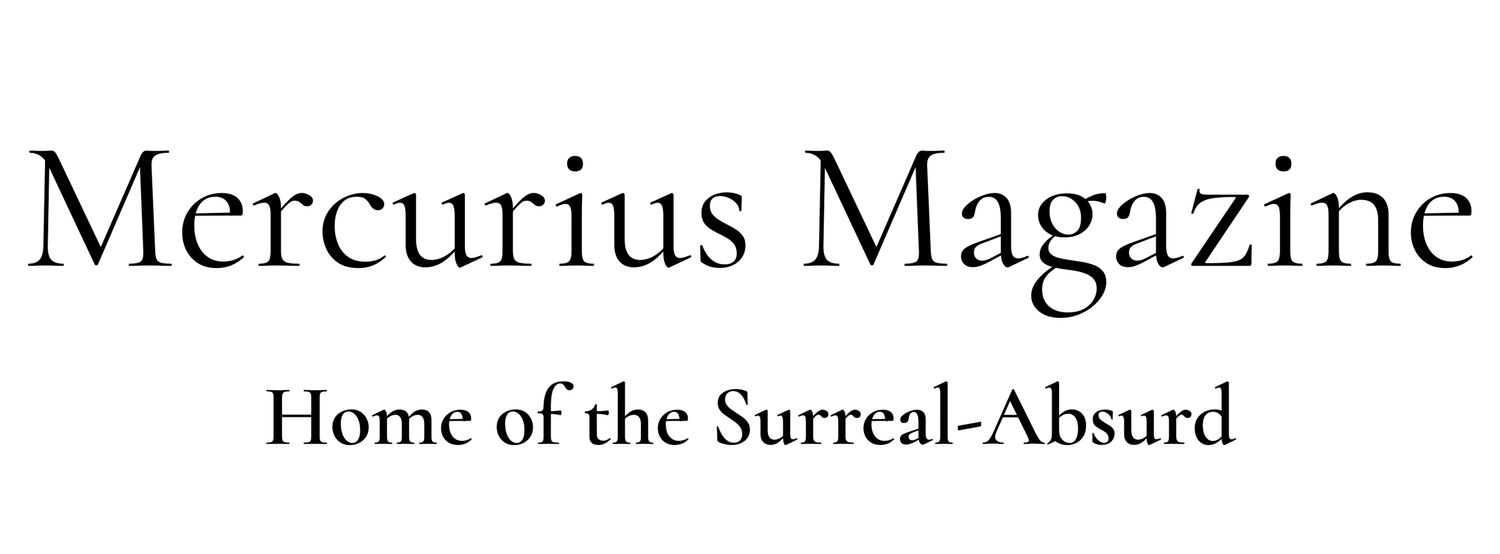Who is Mercurius?
Named after an alchemical concept in the writings of Carl Jung, Mercurius Magazine was founded in May 2020, with the aim of connecting writers, artists, and thinkers under the loose themes of “transformation” and “vitality”.
The magazine has since evolved to focus on contemporary surrealism.
Who is Mercurius?
In alchemy, Mercurius is “a world creating spirit”, an integration of light and dark, good and bad, the beginning and the end of the alchemist’s quest. An animating principle, a vital force. Mercurius encourages us to keep on living, exploring, and learning from experience.
Perhaps “active affirmation” is a guiding principle (there are many). Even difficult experiences and situations produce valuable insight. Whether suffering has a higher purpose is one of the oldest questions in the world. It is often accompanied by a more sinister question: why do apparently good people and innocent creatures suffer?
For light we need darkness; for wisdom, experiences of hell. That does not mean either hell or darkness is good. It only means that insight is born at least partly from them. Suffering is like manure. It smells bad, nobody wants it near them, but it’s useful for growing crops. Mercurius accepts the diversity of experience and tries to make beneficial sense from it.
Basil Valentine’s Azoth woodcut shows Mercurius’s diverse personality. Notice how Mercurius encompasses both the sun and moon, male and female, darkness and light. Azoth was a universal medication or solvent sought in alchemy. Mercurius also has medicinal powers.
Sixth woodcut from the series in Basil Valentine’s Azoth
It is useful to distinguish Mercurius from the trickster deity Mercury or Hermes. Mercury is a juvenile, untutored god, a wild life-force that flows a thousand different ways at once, some of them prosperous, others a-moral. He can lie, cheat, and steal, but also tell the truth and lead the recently deceased to the after-world. He is a path-maker, one who shuffles the cards of fate, who plays seemingly arbitrary tricks.
Mercurius is an evolved version of Mercury, a humanised and compassionate force. While Mercury stands for surface-play, a-moral and unemotional, Mercurius combines the ethical depth with the glittering surface, wisdom with superficial beauty, the soul with rational thought, communication with insight.
The journey from Mercury to Mercurius is a journey that all living beings undertake. We are born with our wildest impulses flowing through us. We love and hate, suffer and learn. The world, for all its charms and hells, exists because of these primordial forces.
The Tibetan Wheel of Life mandala is another good depiction of Mercurius. Also known as the three unwholesome roots, the “three poisons” occupy the very centre of the wheel of life. They take the form of a pig, a snake, and a bird:
Bhāvacakra (Wheel of Life)
The pig is ignorance, since it sleeps in the dirtiest places and eats whatever enters its mouth. The snake is aversion or anger; for it strikes at the slightest touch. The bird is attachment or greed. Without these three poisons, the wheel of life wouldn’t spin. Every sentient being owes their existence to these poisons. Unlike other ascetic religions, Tibetan Buddhism doesn’t seek to negate or repress them, but accept them and channel them into beneficial ends through complex meditation exercises.
In the figure of Mercurius, the ancient alchemists also accepted darkness as an intrinsic feature of light as they sought the philosopher’s stone.


